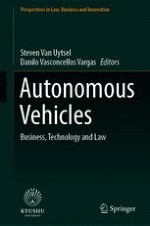2021 | OriginalPaper | Buchkapitel
Different Liability Regimes for Autonomous Vehicles: One Preferable Above the Other?
verfasst von : Steven Van Uytsel
Erschienen in: Autonomous Vehicles
Verlag: Springer Nature Singapore
Aktivieren Sie unsere intelligente Suche, um passende Fachinhalte oder Patente zu finden.
Wählen Sie Textabschnitte aus um mit Künstlicher Intelligenz passenden Patente zu finden. powered by
Markieren Sie Textabschnitte, um KI-gestützt weitere passende Inhalte zu finden. powered by
